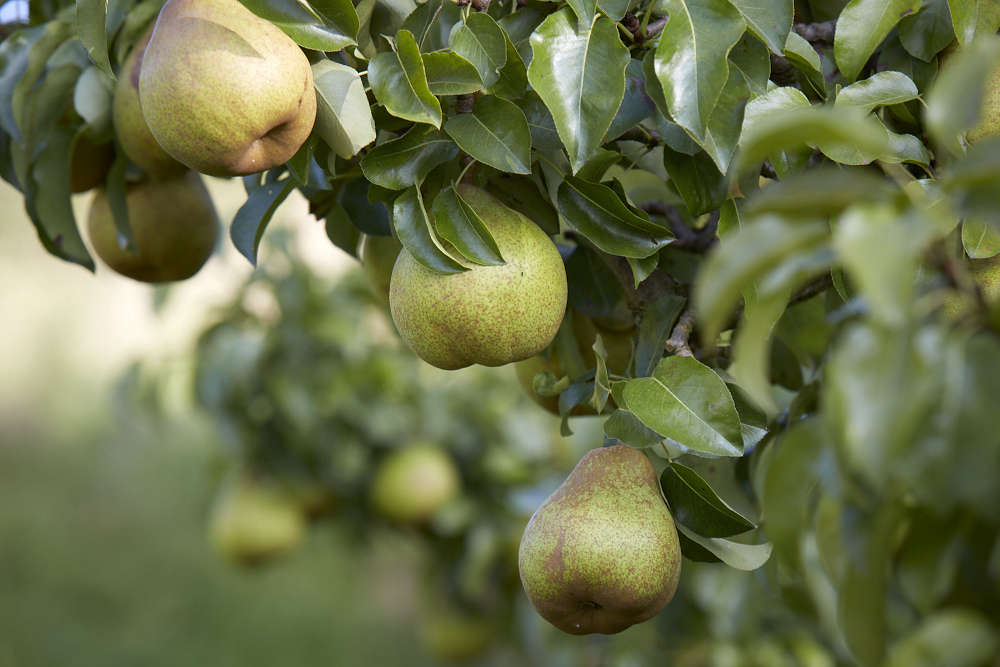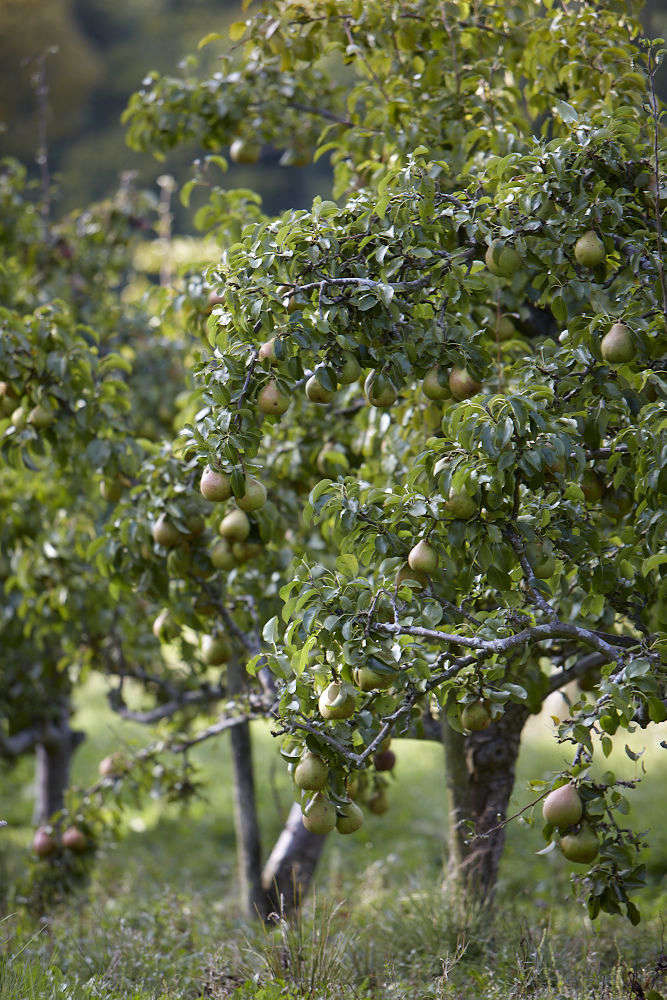Pear, (Pyrus): “Dependable Friend”
Pear trees come by their gnarled branches honestly. They date back to pre-historic times, and dozens of species of these fruit trees spread across Asia, Europe, and beyond. Introduced to North America in the 16th century, the common pear tree can live hundreds of years (and produce at its peak more than a hundred bushel baskets of fruit per year).
Pear trees compete with apple trees for their prominence in legends and fairy stories, and it’s easy to see why. Fairies belong among their white or pale pink blossoms, and must love the way the pear tree’s bark subtly changes color as the seasons progress. Pear blossoms attract pollinators in the spring and
Photography by Britt Willoughby Dyer except where noted.
Above: There’s another layer of magic to pears. After you’ve spent the entire summer micromanaging every cucumber and tomato baby, it’s a pleasure to simply roll up your sleeves and harvest the fruit. That’s practically all the maintenance an established pear tree needs.
Above: If you’d like to start one of these perennial trees, find out from a local nursery which variety will suit your requirements, and buy a year-old plant. If possible, place it on a protected, south-facing slope, and prune it to one central leader in the second spring.
Cheat Sheet
- Most pears will only ripen after they’re picked. To test for readiness, gently pull the stem into a lateral position; if the pear breaks off easily, it’s ready to pick.
- To ripen pears, wrap them in newspaper or brown paper and store them in a cool, dark place.
- Pear trees come in many sizes, from dwarf to 60 feet tall; choose one that fits your landscape.
Keep It Alive
- Pear trees can be susceptible to pests, so surround them with companion plants that counteract that: Try clover, african marigolds, nasturtiums, borage, bee balm, beans, or peas.
- Pear trees want full sun and an inch of water every week.
- Hardy in US growing zones 2-8 (plus 9-10 on the West coast).
Above: Photography by Jim Powell for Gardenista. See more of the free-willed topiary pears at Glendon Hall in Northamptonshire in Garden Visit: At Home with Rosie Bose of Glendon Hall.
Most people seem to inherit their pear tree, rather than plant it themselves. So here’s some advice for maintaining your tree: In spring, prune and fertilize. In summer, water. In fall, harvest and mulch.
Above: Soak pears in wine or brandy for an extra-special fall treat. If you’re serving sliced pears and cheese (yes, please!), drizzle the pears with honey-lemon water to keep them from turning brown.
Above: Looking for companion plants for your pear tree? See our previous Gardening 101 posts on Alyssum, Crocus, and Thyme.
N.B.: If you are thinking of adding a fruit tree to your garden, we can help. See our Garden Design 101 guides:
- Lemon Trees 101, Apple Trees 101, and Persimmon Trees 101.
- In search of an outing? Browse the state-by-state listings for U-Pick Orchards.
Finally, get more ideas on how to successfully plant, grow, and care for pear tree with our Pear Tree: A Field Guide.
Interested in other types of trees? Get more ideas on how to plant, grow, and care for various trees (specimen, deciduous, evergreen) with our Trees: A Field Guide.
Interested in other edible plants for your garden? Get more ideas on how to plant, grow, and care for various edible plants (including flowers, herbs and vegetables) with our Edible Plants: A Field Guide.















Have a Question or Comment About This Post?
Join the conversation